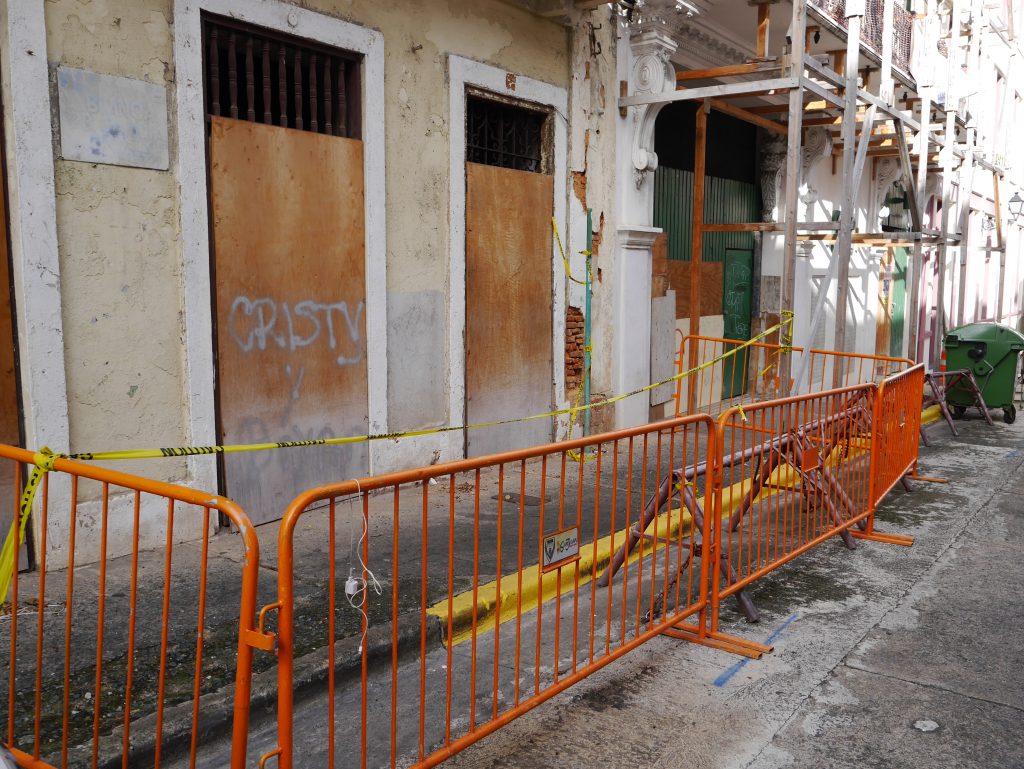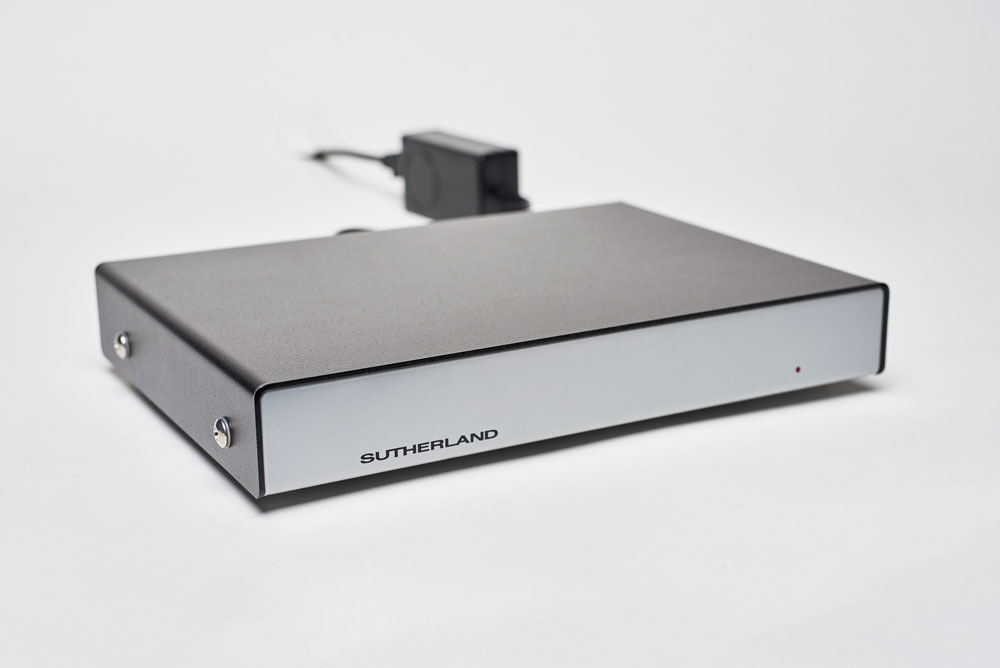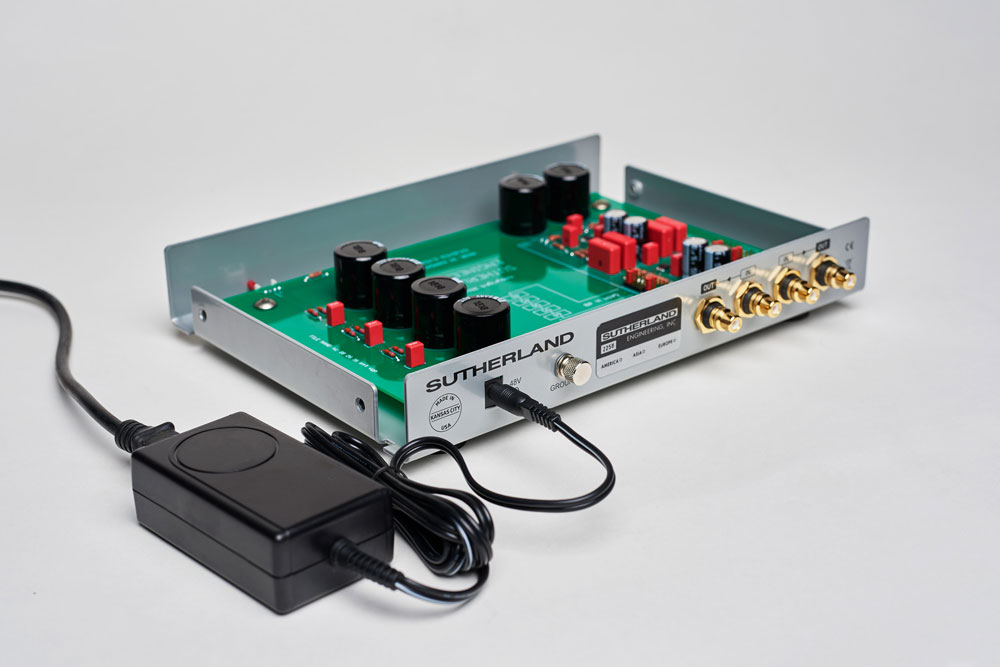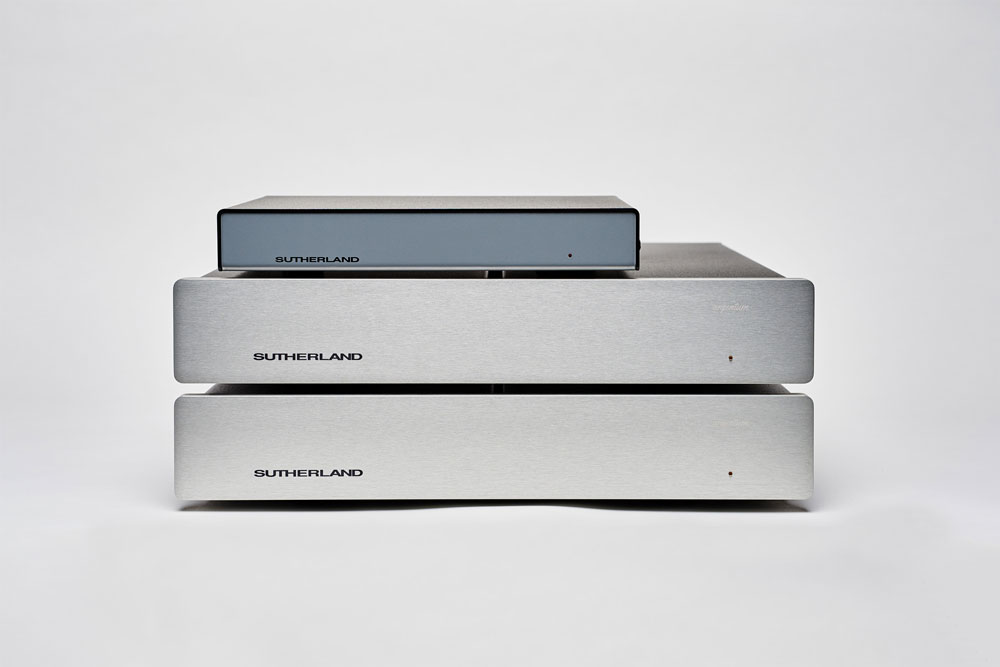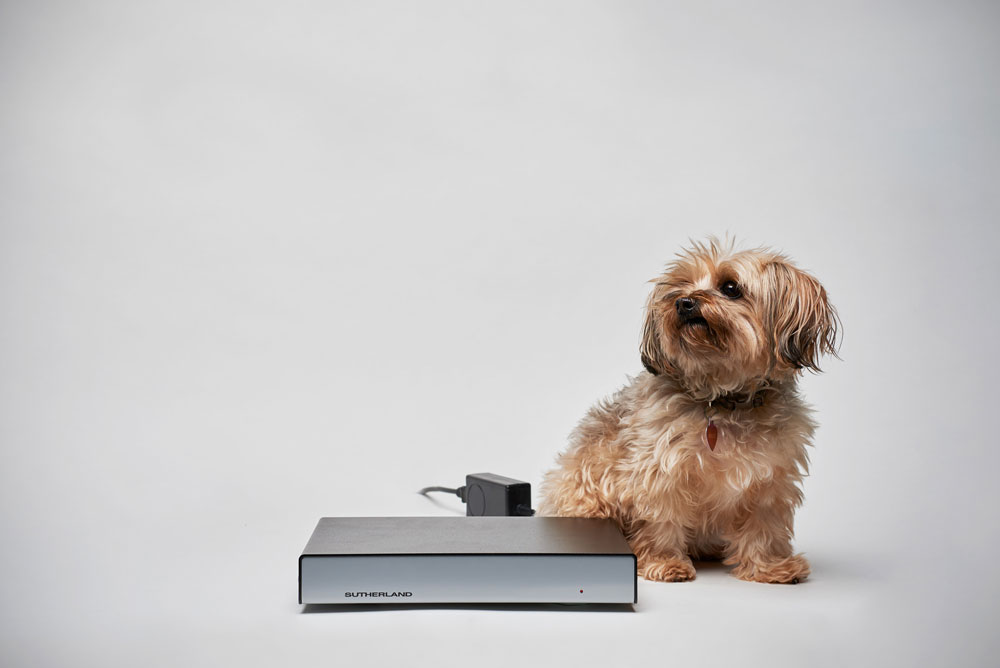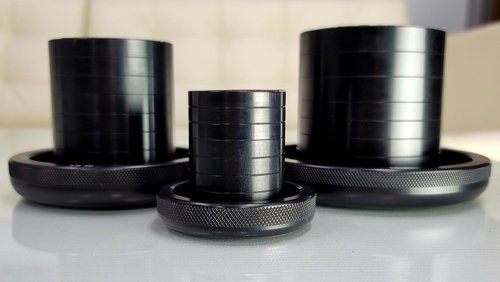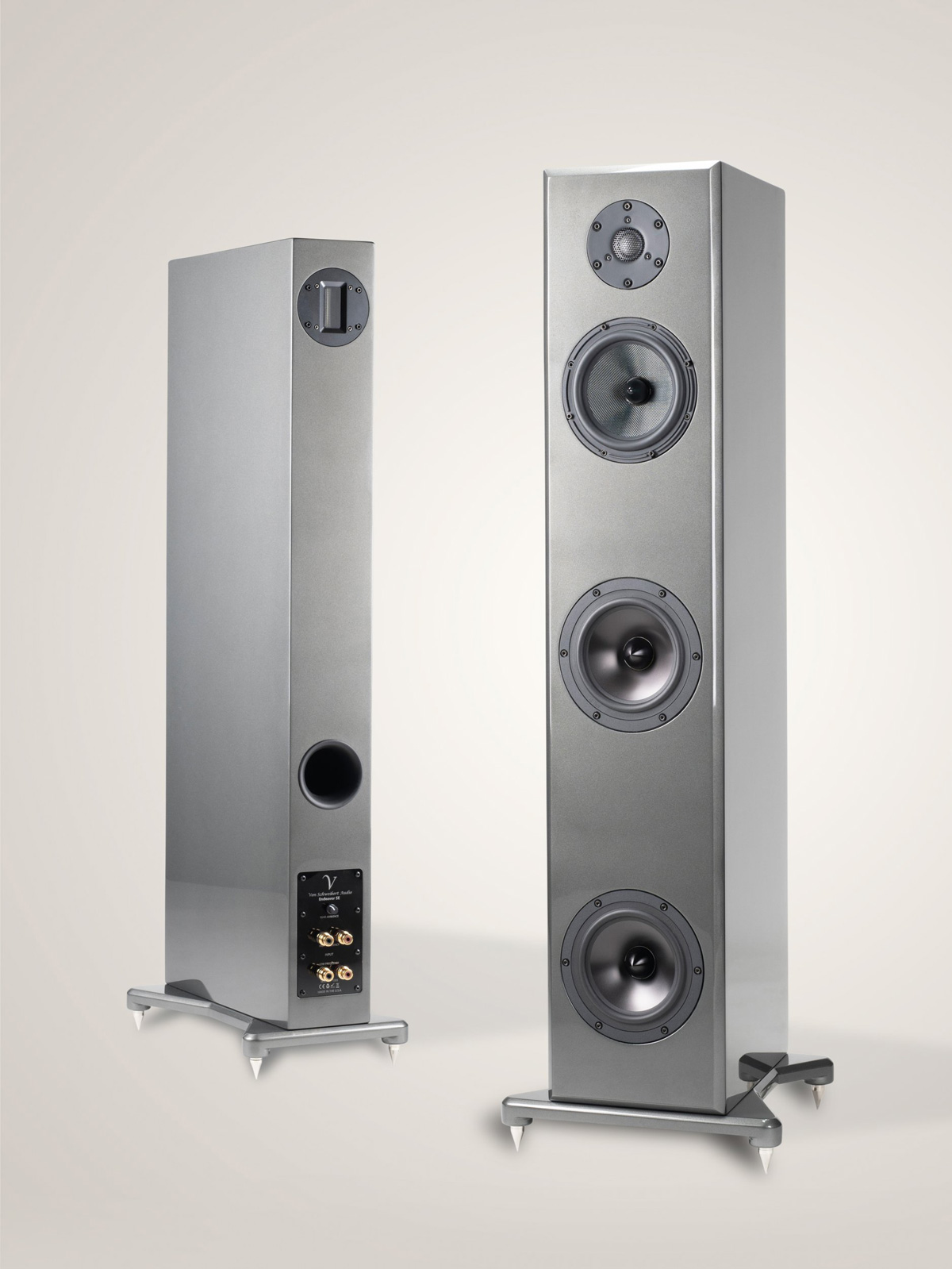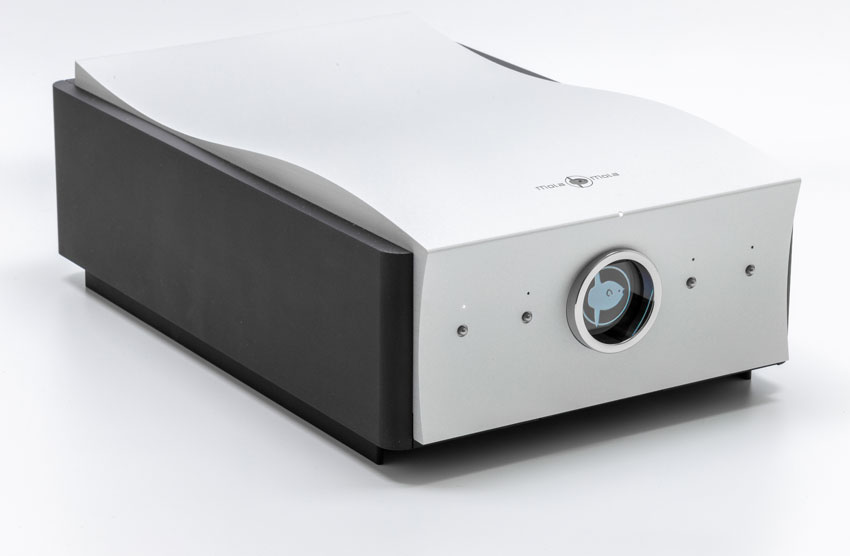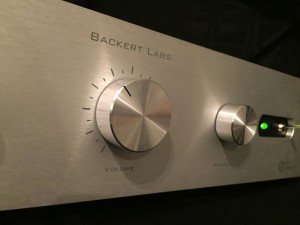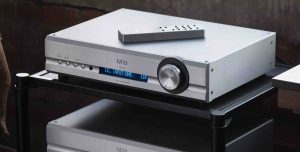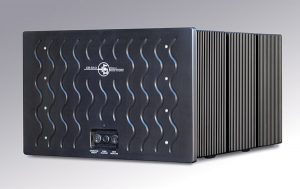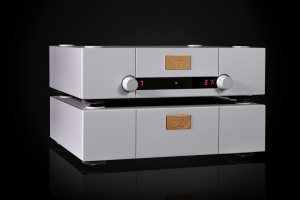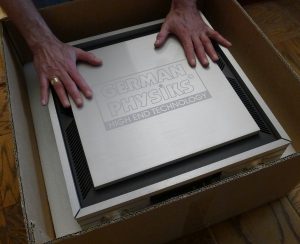The Apartment Life
For those curious about the name I've chosen for my new Positive Feedback column, the New Apartment Lounge, here's the story.
Last spring, I moved into a new apartment, a bigger space than my former digs, but still on the small side. Shortly thereafter, I found a CD I had not listened to in over a decade, Chicago-based tenor saxophonist Von Freeman's highly-regarded 2004 release The Great Divide (Premonition). Listening to Freeman for the first time in years, two qualities of his playing stood out. First, Freeman was a traditionalist, one who largely eschewed the angular, sinewy modalism of players like Wayne Shorter and Joe Henderson.
"The Bridge" by Maurice Jeffries
Second, his ribs and hot-sauce style, hi-lighted by a fat, big-boned tone and a sly tendency to play just a millisecond behind the beat, cast Freeman in a distinctly old school light. But his playing was hardly anachronistic. He mated his Chicago-tinged soulfulness to a rip-saw, urban-edged aesthetic that produced a sound equal parts bitter and sweet on the one hand, but also dramatically colorful and swinging on the other (no doubt a carryover from his Sun Ra days).
During the last years of his long life, Freeman wowed loyal audiences with his earthy, bluesy musings at the New Apartment Lounge, a small, under-the-radar jazz club located in Chicago's historic Chatham neighborhood, now sadly closed. Freeman, who left us in 2012 (at the ripe ole age of 88), represented a bridge to southside Chicago's rich jazz and blues traditions. Fiercely loyal to the city (one I called home for many years), and to the largely African-American southside, Freeman rarely ventured beyond his hometown borders. But what a mark he left. His son, the famed tenor saxophonist Chico Freeman, become a post-modern jazz fixture in the 1980s. And more than a few members of the celebrated Association for the Advancement of Creative Musicians (AACM) count the senior Freeman as one of their seminal influences. Not to mention an impressive body of soulful, big-hearted recordings under his own name dating back decades.
Listening to Freeman bob and weave on CD reminded me of the several times I saw him perform live at the New Apartment Lounge. Freeman's mantra of embracing the here-and-now, coupled to his unapologetically swinging, darting, soulful improvisational style, was pure Chicago. Like the best jazz musicians, Freeman successfully channeled who he was, how he lived, and his relationship to the community that informed and nurtured him, through his horn. If my recent move, and Freeman's soulful example, had taught me anything, it was this: That one should see small-space living not as an impediment to good sound, but as a challenge in creative listening. From here on in, I would make the most of my own "new apartment lounge" (hence the title of the new column) and happily report my experiences, good and bad, to the PF community.
I think (hope) that Brother Freeman would approve.
"Old San Juan 2" by Maurice Jeffries
Making Do with Less
As I hinted at earlier, my new rabbit hole hardly qualifies as palatial. The living/listening room measures a scant 12x15, about the same size as my old listening space. The space is comfortable, nicely furnished and decorated, and can accommodate compact speakers and small planars like my beloved Maggie 1.7is wonderfully. Beyond that, however, and you are out of luck. Much as I would love to take the new Wilson Audio Yvettes or Monitor Audio PL300 IIs out for a spin, these beasts simply will not fit, let alone perform well, in my space. One-hundred kilo turntables and Class A solid-state mono amps the size of small refrigerators? Yeah, right!
What's a poor audiophile to do? Fortunately for me (and you), today there are more space-saving options available to the square-meter deprived masses than ever before. With the household downsizing trend showing no signs of abating, and with average apartment square footage sizes dwindling to microscopic proportions in major urban centers like New York and San Francisco, audio manufacturers of all stripes are responding in kind.
All in one receiver/source boxes have become increasingly popular. A gaggle of space-saving integrated amplifiers now occupy virtually every segment of the high end, many outfitted with fine-sounding on-board DACs and/or phono-stages. Compact DACs and small but sexy music streamers and servers allow music lovers to rip vast CD collections to dedicated hard drives and donate the space-munching silver boxes to the local library of thrift store. One can even purchase space-saving turntables from companies like Rega and Brinkmann without sacrificing one iota of overall performance. And small two-way speakers (plus a few small three-ways as well) remain as popular as ever. I reported on the superb Von Schweikert Audio Unifield 2 Mk. III compact speakers last month (three-ways), and plan to report on the outstanding Focal Sopra 1s shortly.
Potential Roommates: Which Ones to Favor, Which Ones to Lose?
The first pint-sized overachiever to take up residence chez Jeffries was the superb little Lumin D1 networked audio player. Tiny in size, but capable of playing with considerable finesse, sophistication and heart, the little Lumin hit all my musical bases. I liked the Lumin so much, I ended up buying the review sample.
My latest house guest, is if anything, even smaller than the petite D1. Sutherland Engineering's KC VIBE phono stage, designer extraordinaire Ron Sutherland's latest exercise in affordable phono-stage design and the subject of this review, measures a miniscule 11" wide, by 9" deep, by 2" high, and tips the scales at a svelte 6 pounds. I've eaten donuts that weighed more! For more on Ron Sutherland and the KC VIBE, go HERE
Image courtesy of Sutherland Engineering, Inc.
From its smartly designed exterior to its meticulously laid-out interior, the KC VIBE is all Sutherland (and the immediate replacement for the now discontinued Sutherland Ph3D battery-powered phono stage). Canny cost-saving strategies allowed Sutherland to bring the VIBE's price in well below the $1000 mark ($895, actually). The VIBE eschews the thickly-machined aluminum faceplates and physically isolated power and phono circuit boards seen in Sutherland's pricier models. The chassis consists of artfully folded steel sheets bolted together to create the phono stage body. The bottom sheet is powder-coated in a tasteful silver finish that resembles aluminum. Cost-effective, yes, but also cute-as-a button (about which more, please refer to the designer profile report that follows this review).
Image courtesy of Sutherland Engineering, Inc.
The single circuit board is replete with power filtration caps on the left-side, here wed to even more power supply filtration caps to feed the elegantly hand-soldered phono circuit on side right. Gain and loading options are set using supplied shunts that "pop" into pre-labeled inserts. One must set gain and loading values for each channel. An outboard wall-wart PSU, here an unusual 48V design, powers the unit. There is no "on-off" switch. The KC VIBE remains energized full-time.
To make loading and gain adjustments, you'll need a phillips-head screwdriver to remove the VIBE's black top plate and access the shunts. Loading options include 100, 200, 475, 1k, or 47k Ohm settings, more than enough to accommodate the bulk of commercially available MCs. Gain settings include 40, 45, 50, 55, or 60dB options. Again, this is enough gain for most cartridges, although perhaps not enough for ultra-low output MCs. Sutherland factory sets loading/gain levels at 200 Ohms and 60dB respectively. These setting will work for many MCs on the market, but I encourage you to experiment with numerous options before selecting a favorite for your chosen cartridge. I selected a gain level of 55dB for my low output Dynavector 20x2 MC cartridge, and loaded the 20x2 at 100 Ohms. These settings offered plenty of gain for low level listening, and more than enough headroom for more energetic excursions.
Inputs and outputs consist of high-quality, gold-plated RCAs (no XLRs) located on the elegantly arranged rear panel. Sutherland feels (and quite strongly) that balanced circuits require more complexity and more stuff, but do not necessarily deliver superior sound quality. A single grounding post allows users to minimize hum-induced noise.
Image courtesy of Sutherland Engineering, Inc.
The "Jake LaMotta" Complex
According to Martin Scorsese's noir-tinged reimagining of middle weight boxer Jake LaMotta's tumultuous life and career, the pugilist frequently imagined himself challenging the legendary Joe Lewis for the heavyweight title. Like the recently departed Mr. LaMotta, the little VIBE sees itself not as a light weight scrapper, but one capable of punching well above its weight class.
Dynamically speaking, the Lilliputian VIBE proved anything but. Its macro-dynamic reach was robustly engaging, with nary a trace of hardness or glare. Chad Kassem and team's superb reissue of Jean Morel and the Paris Conservatoire Orchestra's lovely reading of Albéniz's Iberia pulsated and bounced infectiously. From the delicately plucked strings to the rumble of the orchestra at full boar, the VIBE delivered the musical goods in full measure. Transient speed and instrumental bloom were very good for an affordably-priced unit.
Micro-dynamic precision also impressed. The VIBE exhumed low-level details like a much pricier unit, though not quite as convincingly as my three-times more costly reference, the John Curl-designed Parasound JC 3+. Well-recorded jazz and pop recordings positively shimmered, with supple textures, low-level details, and ambient cues reproduced largely intact. Elvis Costello's passionate, and at times, just-in-tune delivery on Painted from Memory (MFSL 1-475 LP) supplied all the chills and thrills that I remembered from this almost 20-year old pop chestnut. The little VIBE captured all the pathos, psycho-sexual ambivalence, and emotional dysfunction that Bacharach, Costello and supporting cast could dish out, leaving only that little bit of frequency extension, drama, sophistication and airy expressiveness on the table when compared to more costly units. The VIBE also made clear that the LP reissue sounded oh so much better than the original CD.
The frequency extremes were handled quite deftly, and more importantly, musically, especially for the price. Highs shimmered with just enough filigreed detail to satisfy over the long haul, while bass notes thundered with sufficient grunt and ferocity to serve the music faithfully. Overall, I found the VIBE to sound ever-so-slightly lean compared with my reference, but I enjoyed its unique sonic perspective nevertheless.
The KC bought out all the verve and bounce that my beloved Dynavector 20x2 MC can deliver, in some ways even besting my reference. Instead of rolling off the frequency extremes, a move that likely would have have resulted in a more forgiving balance, Sutherland (the designer) has (and correctly in my view), offered almost full frequency expression, especially up top, but sacrificed a bit of the drama, scale and staging majesty that one expects in more costly units. What one can't help but notice is the supremely naturalistic voice with which the VIBE makes its case. Naturalness and overall coherence rank highly in its performance universe.
Again, we are not talking reference performance levels, but so what? Mate the $895 Vibe with your favorite $1000 to 1500 table/arm/cartridge combo (Ron sees the financially-sensible folks that drive Subarus as the VIBE's natural customers) and you will have an affordable match made in heaven.
Quibbles and Bits
For the price, there really isn't much to criticize. The VIBE mates sensible form-follows-function design cues with class-leading sound to produce an intoxicating mix. It boasts puppy-cute good looks, and is extremely well-built. It does not boast the convenience features of the $1K Pro-ject Phono Box RS (features that Sutherland believes compromise sound quality), a beautifully-built, fine-sounding unit that rivals the Vibe in its ability to exhume musical details from the best recordings, but doesn't quite have the Vibes's overall sparkle and verve. The VIBE unapologetically embraces its minimalist DNA, channeling as it were its designer's unapologetically minimalist design ethos, to resounding success.
Image courtesy of Sutherland Engineering, Inc.
Our own Robert Levi recently gushed over John Curl's new Parasound JC 3 Jr. phono preamplifier, describing it as the unit to own in the under-$2K phono stage sweepstakes. Although I haven't yet heard the Jr. (priced at $1495), I can't, at least based on my experience with the pricier JC 3 +, imagine that unit embarrassing the little VIBE sonically. Bettering the littlest Sutherland in certain key areas, especially given the price difference? Sure. But outright clobbering the KC? I doubt it.
Very, very highly recommended, and a real challenge for phono stage designers charging more but offering oh so much less musically.
Go git you one!
Sutherland Engineering KC VIBE phono stage
Retail: $895
Sutherland Engineering, Inc.
816.718.7898





